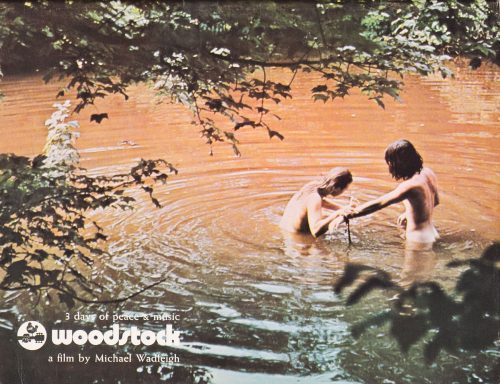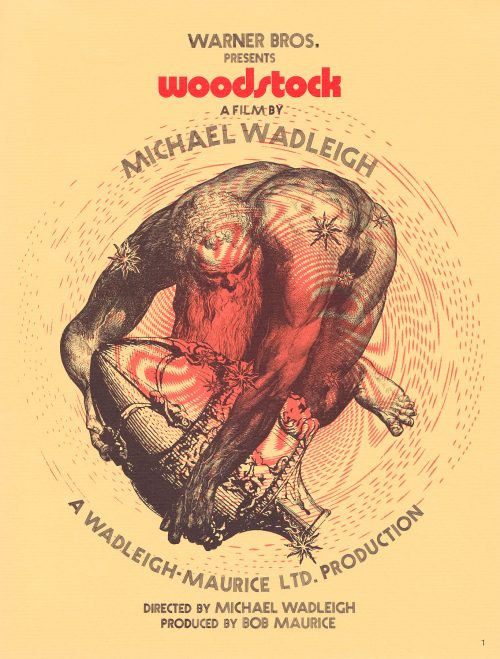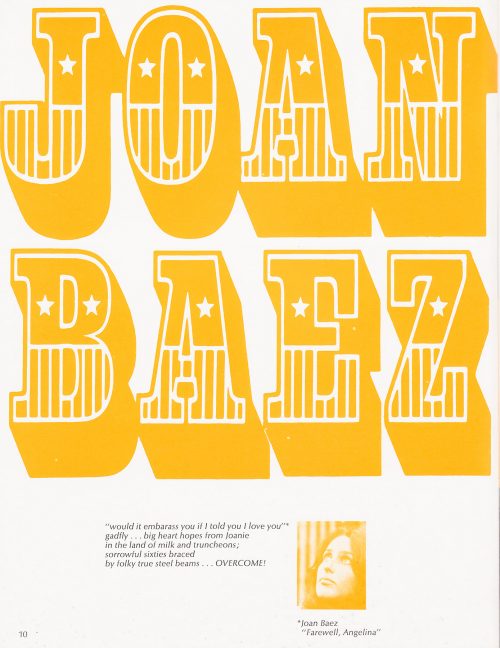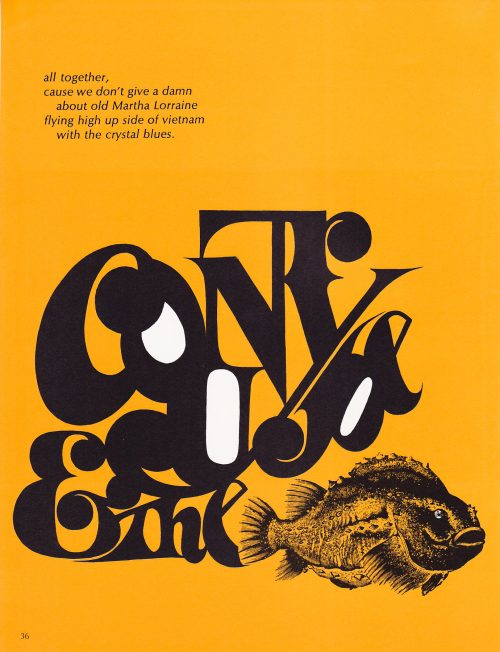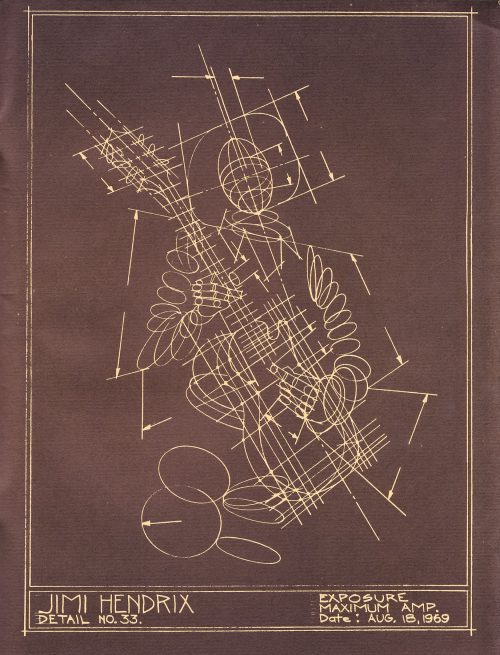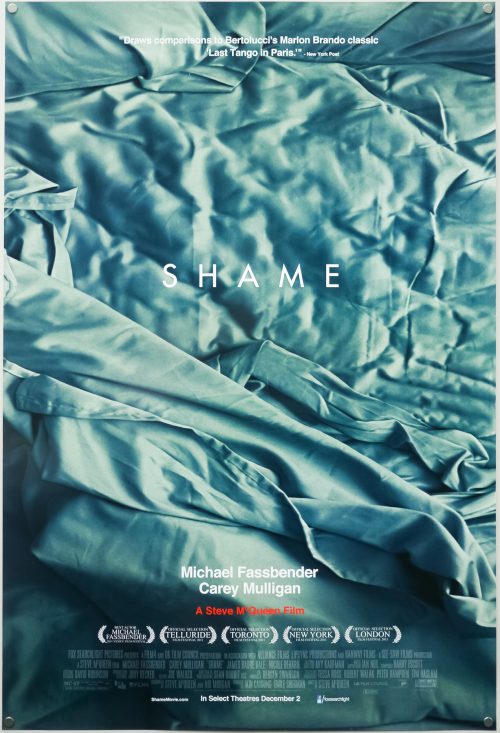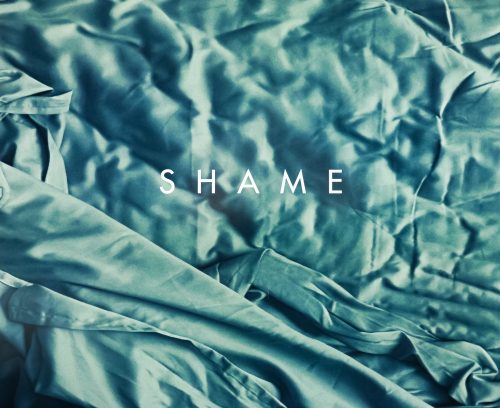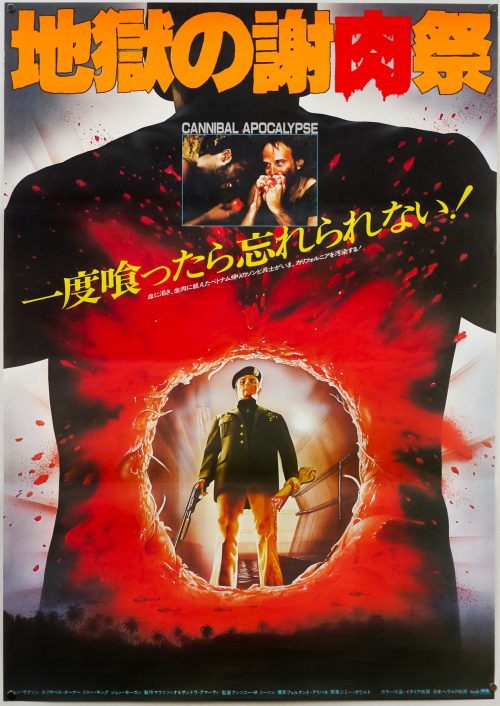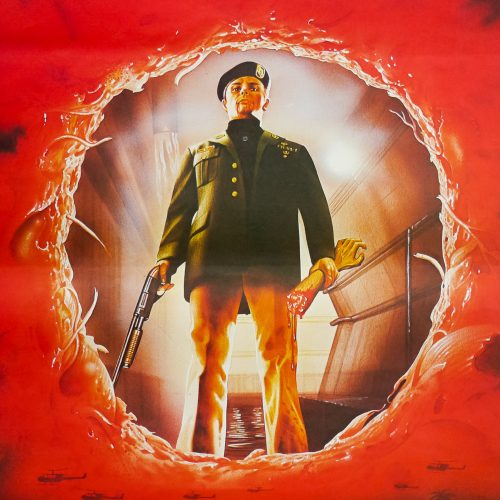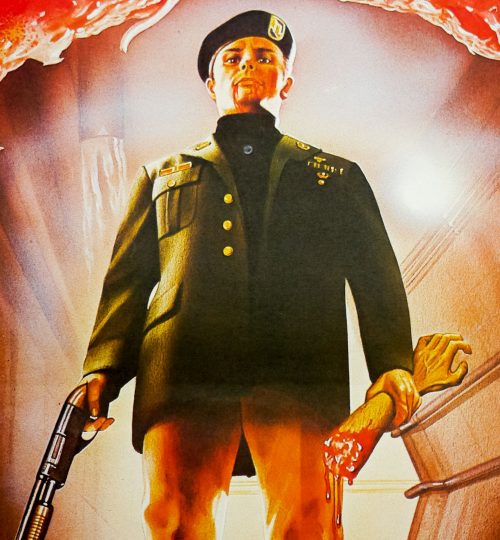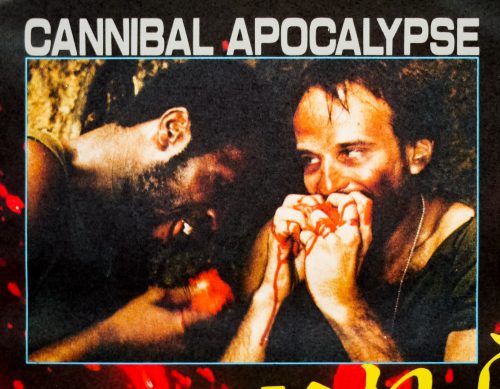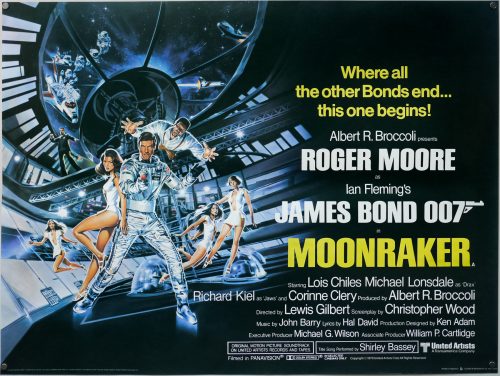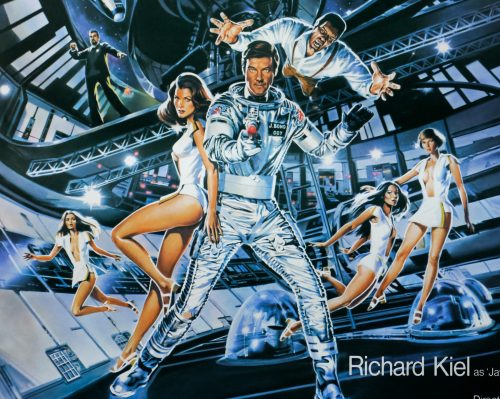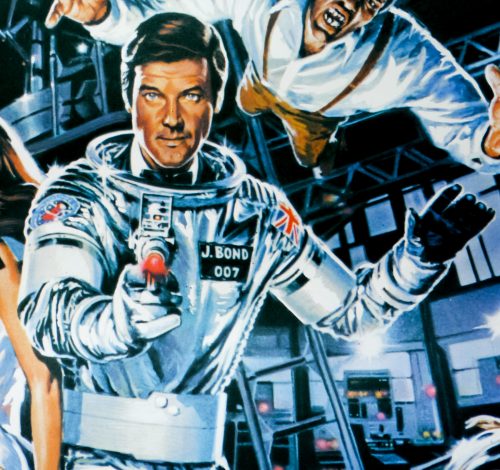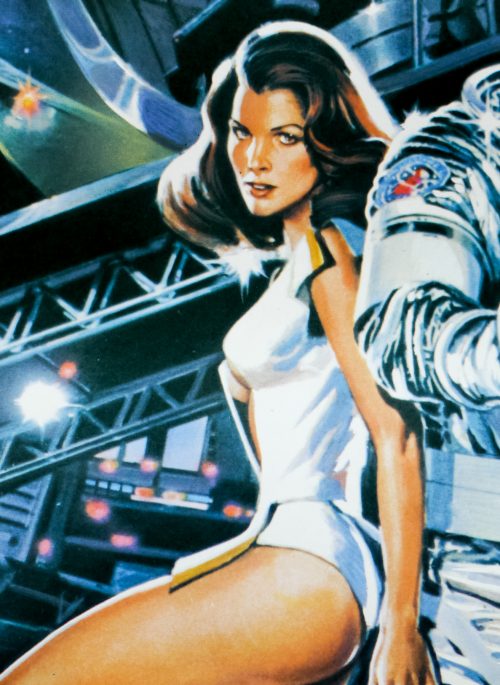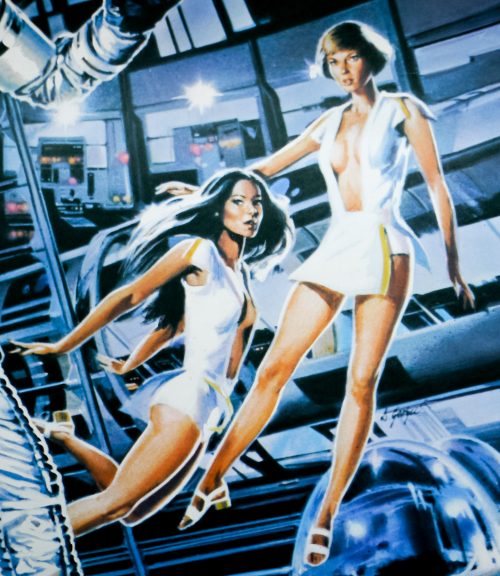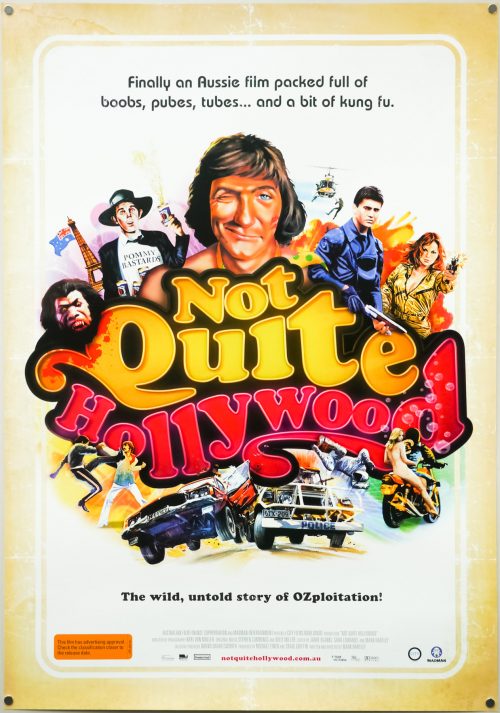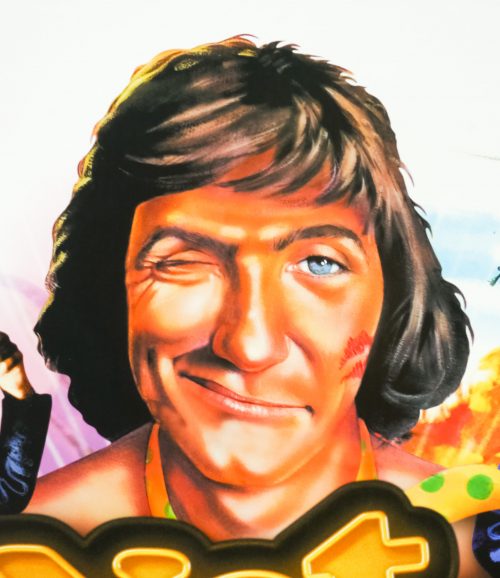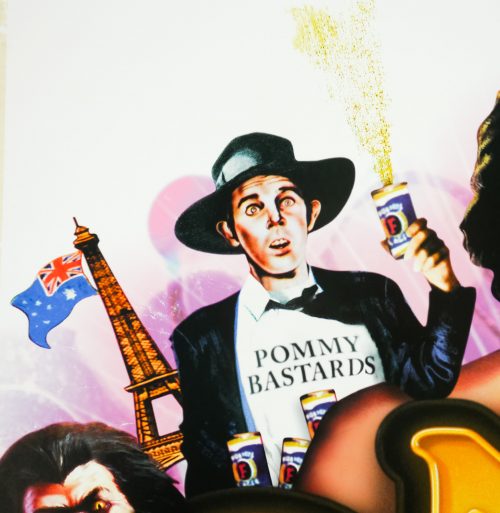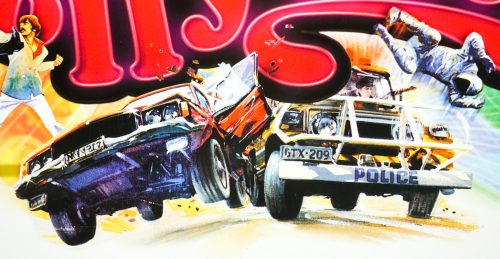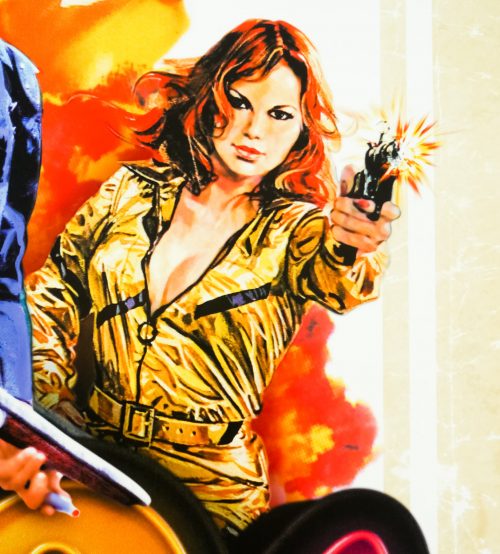In the history of British film posters there are few figures as significant and popular as the late, great designer and illustrator Tom Chantrell. After working on his first piece of poster art in 1938, Tom spent most of the next 50 years designing and painting many of the most iconic British posters for films ranging from Hollywood blockbusters like Star Wars to European cult oddities like Andrzej Zulawski’s Possession. As Sim Branaghan, the author of British Film Posters (and a good friend of Tom) notes in his biography on the official Tom Chantrell website, the artist had an instinctive grasp of how to sell films to a mass-audience. Combined with his undeniable talent for painting dynamic, colourful images and capturing star likenesses, Tom found his talents in great demand from most of the production companies and distributors that had their offices in the bustling Soho area of central London. It is estimated that Tom worked on in excess of 7000 designs during his career (although not all of these would have seen the inside of a printing press).
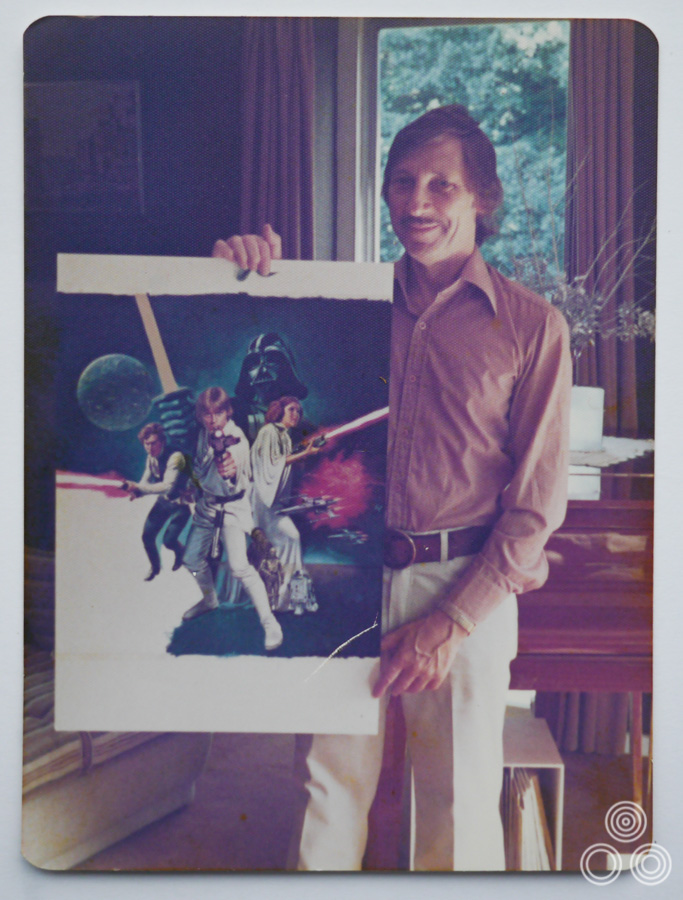
Tom Chantrell stands holding the near-finished artwork for Star Wars, arguably his most famous work. Photo taken by his wife Shirley in 1977.
It’s hard to believe today but it took over two decades before Tom accepted that his work was of any significance, having spent many years feeling that he was ‘just’ a commercial artist moving from job to job. It took the encouragement and dedication of one woman to make Tom realise that his artwork was something worth treasuring. That woman was Shirley Chantrell, his second wife, the mother of his twin daughters, Jaqui and Louise, and his constant companion for just shy of 40 years. Shirley herself has had something of a remarkable life from her beginnings as the daughter of a horticulturist in Singapore, with a brave and fateful voyage to London just shy of her 18th birthday that eventually resulted in a chance meeting with Tom, altering the course of their lives forever.
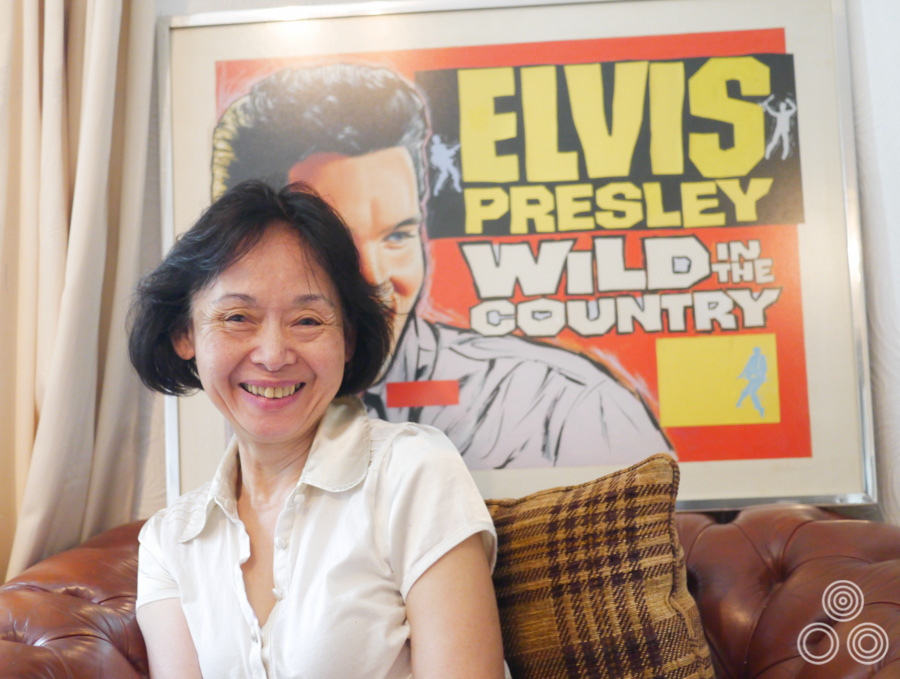
Shirley Chantrell sitting in front of the original artwork for the Elvis Presley film Wild in the Country, which was painted by her late husband, Tom Chantrell. Photo taken August 2012.
Although Tom passed away in 2001, Shirley’s insistence that his work had value beyond just the payment he received for it meant that the Chantrells had amassed an archive consisting of over 40 years worth of material, including original artwork, sketches, posters and plenty of reference items that Tom used to create his work. Having carefully preserved this material since Tom’s death, Shirley decided it was time to share the archive and allow fans of his work to view and purchase select pieces. Last year Chantrellposter.com was launched in collaboration with the respected memorabilia dealer Michael Bloomfield and the result is a treasure trove of Chantrell artefacts that is well worth a visit.
Over the past two years I’ve had the privilege of spending time with Shirley and from our very first meeting it became clear that her life story was intrinsically linked with that of her husband’s and that hers had been no less remarkable. Furthermore, I knew that it was a story worth sharing with others and this resulting article is intended to give the reader an insight into Shirley’s life and the four decades she spent with Tom. I have included plenty of never-before-seen photographs, including some amusing reference images that Tom used to create his work.
Shirley, I’d like to start with your early life, if I may. You were born in Singapore?
Yes, in 1944, the year before peace!
What did your parents do?
They were originally from China and my father worked in horticulture and he used to grow seasonal flowers for wholesale. My mum helped with the business and together they would tend to the plants all year round. If there were a big festival coming up they would be calculating how long it would take each flower to get ready for the show and plan everything meticulously. They were growing flowers like Dahlias and Gladiolis and I remember the bulbs were from countries like Holland. Even at a young age I was keen to know all about these other places that seemed so mysterious to me.
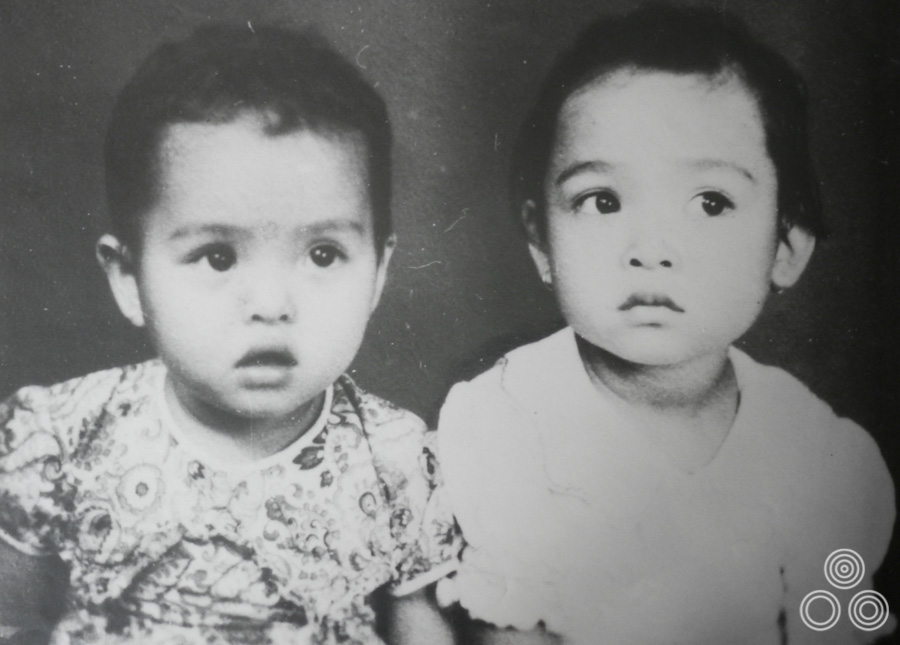
Shirley Chantrell (right) and her sister Wai-Chee, aged around 2 years old in 1946.
My father used to look after European family houses and he used to grow these lovely flowers in the gardens. He would enter competitions by sending them off to exhibitions and he was so good at it that he actually won several Silver Cups, which he was really proud of.
I remember that when my father was making deliveries around the city he would place me in this big basket that was full of all these flowers, and he would cycle it around with me sat there in the middle of these beautiful colours. I have this vivid memory of a time he passed by the Singapore River to show me these huge boats and we rested and had a coffee together by the waterside.
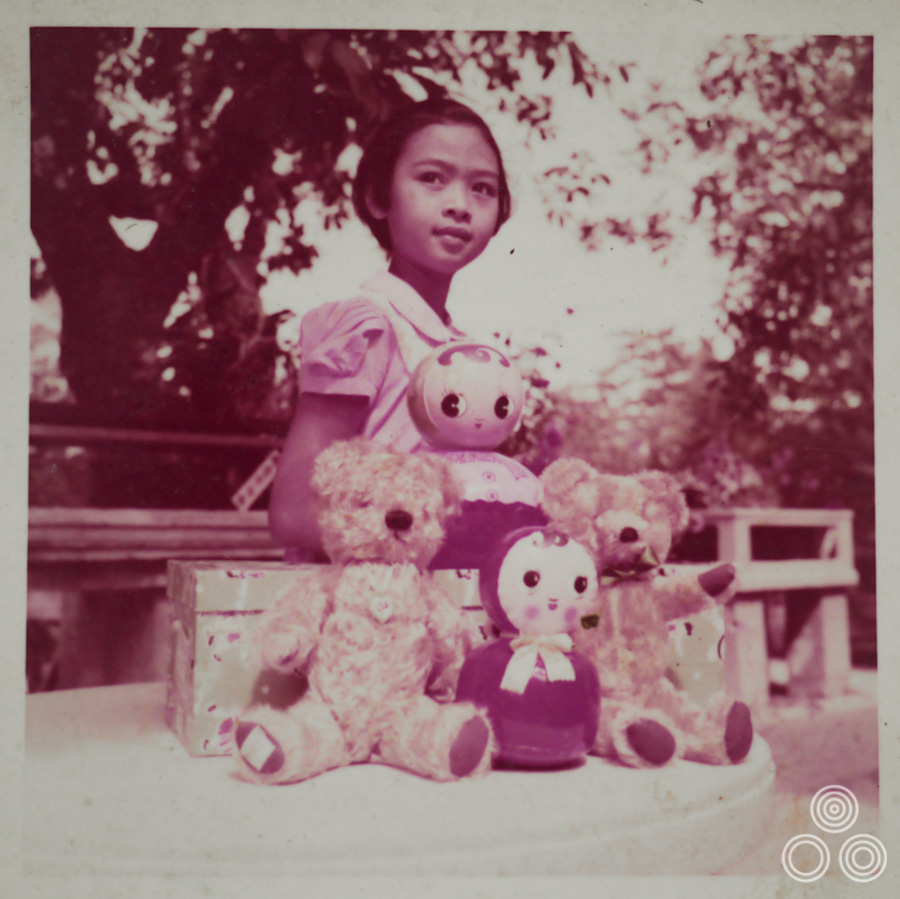
Shirley Chantrell stands with a selection of toys, aged around 6. Shirley: ‘These weren’t even my toys – I think they belonged to the children of one of the houses that my father looked after!’
You were one of how many children?
I was number six and my mum actually had nine in total. My brother is the eldest and then there are two sisters above me but there were originally two boys who sadly didn’t live past the era of the Japanese occupation of Singapore; they perished because of a wartime epidemic. Below me I have three sisters.
So you were born at the end of the war? Did you understand how tough things had been during it?
Well my mum made it clear that food was scarce. I think they were lucky though because my brother was already eight or nine years old whilst the Japanese were there and he was clever enough to learn to speak their language. They really liked that and used to give him bags of rice, which really helped our family.
When the Japanese came my family were really worried that they’d see we had a connection with those European families – especially the English – so my father actually hid the trophies he’d won in a pond because he’d have been punished if they’d found them. After the war he couldn’t find the trophies again so they must have been taken or gone rotten maybe.
Continue reading
